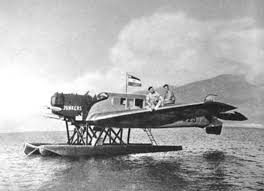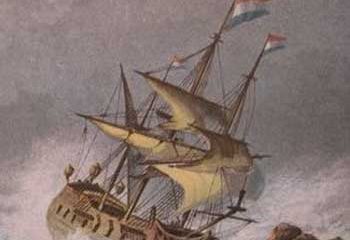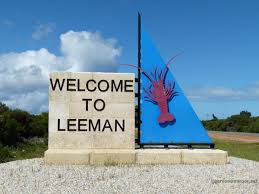Camp Columbia in the suburb of Wacol in Brisbane was a United States Army military camp. It was built in 1942 to accommodate American troops. The Sixth US Army Headquarters was formed and stationed here. It also hosted two hospitals and an Officer Candidate School till 1945. This was the major staging camp used by the Allied Forces for the liberation of the South West Pacific. Close to a million US soldiers passed through Brisbane to the various theatres of war in the Pacific.
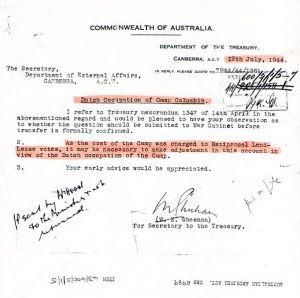
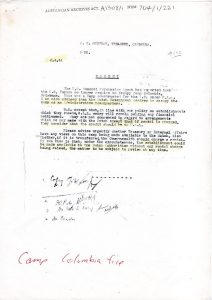
In June 1944 after the liberation of New Guinea, the South Pacific Allied Headquarters moved to a new base at Hollandia, the capital of Dutch New Guinea, in order to be closer to the theater of war.
With the war in the Pacific nearing its end the Dutch started to prepare for the recolonisation of the NEI (Netherlands East Indies). Consequently the Dutch decided, with the approval of the Australian Government, to establish the NEI Government-in-Exile, the first and only time that this happened in Australia.
The Dutch received the use of the Camp Columbia site, free of rent.
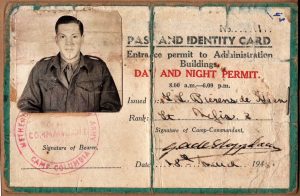
Ever since their arrival in Australia the Dutch had problems with getting enough Dutch staff. With the Netherlands occupied that avenue was closed and the Dutch Government in London was preoccupied with the liberation of the Netherlands. The most senior person for NEI affairs was the Dutch Minister for Colonies Hubertus van Mook, who – as the Minister for Colonies – between most of 1942-1944 was based in London. This made communication regarding the recolonisation of NEI extremely difficult. In February 1944 van Mook resigned as Minister and finally became the full time Lieutenant Governor-General of NEI. Slowly more staff had been recruited from other Dutch overseas posts and now accommodation became a serious problem.
Communication and travel between the various Dutch military offices across Australia had equally become difficult and time-consuming, and to prepare for the return to NEI, consolidation was urgently needed. Thus it was decided to move the various Dutch headquarters to “Camp Columbia“ at Wacol. By the end of 1944 most of the 2,000 Dutch and NEI staff ended up in Brisbane.
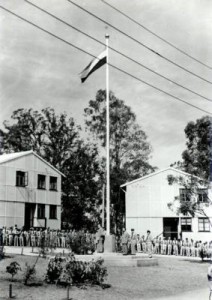
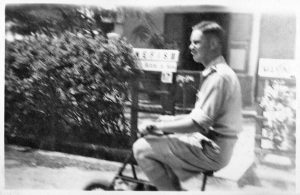
The move of all of the offices of the NEI government-in-exile to one place was a major exercise.
The first group that moved into the Wacol facilities was The Netherlands Forces Intelligence Service (NEFIS), in June 1944. The Australian Government provided a special train for the NEI government-in-exile to move its NEFIS staff and files from Melbourne to Wacol.
The Dutch refurbishment of Camp Columbia began in June 1944. All building work needed the approval of the Australian Department of War Organisation and Industry Works, but the work itself was done by the Dutch.
The NEI Labour Battalion – consisting of interned non-European NEI nationals as well as Indonesians opposing Dutch rule in NEI and overseen by Dutch officers – were brought in as extra labour from the NEI camp in Casino.
Buildings and facilities during the Dutch period
The following photos marked Collection Jack Ford are copies of pictures from Mrs. Jean van Schilfgaarde. Dr. Jack Ford had contacted her for his research for his publication: Allies in bind: Australia and the Netherlands East Indies relations during World War Two. This is one of the few, perhaps even the only personnel record of a civilian staff member of Camp Columbia during the Dutch occupation of the Camp. Jean worked at office of the Netherland Forces Intelligence Service (NEFIS). The text of her letter to Jack can be read here.
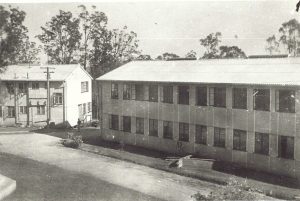
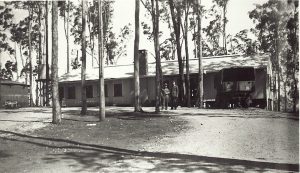
They constructed new office buildings, club facilities and a laundry while showers and toilets were added to the accommodation huts. After taking advice from US authorities, the Australian Government took the unusual step of not charging the Dutch for the lease of the site under a Reciprocal Lend Lease arrangement1, allowing for the provision of aid between World War II allies with war materials, such as ammunition, tanks, airplanes, and trucks, and with food and other goods.
According to Lockwood2, there was criticisms about the rather luxurious renovation, including beer gardens for the Dutch colonial officers amidst war time austerity. It was thought that the American camp, certainly by Australian military standards was already in an excellent condition. Over the following months the following groups moved into Wacol and some of the other buildings in Brisbane:
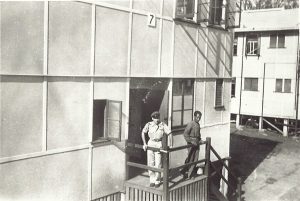
- The seat of the NEI Government-in-Exile was established in the former HQ of the US 6th Army.
- The Headquarters if the NEI Army.
- Specialised Dutch military units moved to Brisbane to serve the NEI government-in-exile.
- The Women’s Army Corps moved to Wacol but trained at Yeronga Park.
- NEFIS, the first unit to move to Camp Columbia, provided one of the most important contributions to the Allied effort. Providing critical intelligence information supporting the war effort. They also leased offices at the New Zealand Insurance Building at 334-338 Queen Street in Brisbane.
- NEI Government Information Service (NEIGIS) along with its Film and Photographic Unit.
- The NEI Army Air Corps (Militaire Luchtvaart or ML-KNIL) leased fourth floor offices in the Courier Building at 240 Queen Street, as headquarters.
- Mornington House Wooloowin housed Dutch aircrew who flew air transport for Camp Columbia.
- By June 1944 there were 16 Dutch Dakota aircraft concentrated at Archerfield aerodrome.
- The NEI government-in-exile continued to rent the Pacific Private Hotel at 421 Brunswick Street, Fortitude Valley for use as a hotel or canteen for Dutch military personnel.
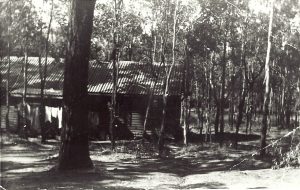
Furthermore two small warehouses were allotted to the Dutch at the US supply base of Camp Meeandah at Pinkenba. All sites were chosen for their transport links to Camp Columbia. Archerfield – then Brisbane’s domestic airport – was close to Wacol and Pinkenba, Fortitude Valley and the CBD were connected to Wacol by rail.
Other facilities moved to Wacol too. The Bank voor Nederlandsch Indie NV (NEI Bank Ltd), that controlled the currency supply for the liberated parts of the NEI, was one of the first. The Bank oversaw the NEI government-in-Exile’s new economic agencies. These were:
- The Nederlandsche Indische Escompto Maatschappij NV (NEI Discount Co Ltd);
- The Nederlandsche Indische Handelsbank NV (NEI Commercial Bank Ltd); and
- The Nederlandsche Handel Maatschappij NV (Dutch Trading Company Ltd).
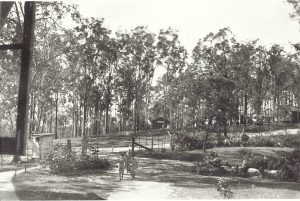
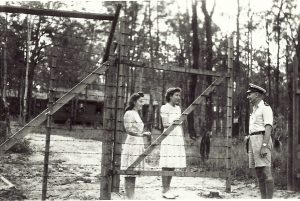
The Netherlands Indies Civil Administration (NICA) headquarters went to Wacol. NICA’s role was to follow behind the Allied invasion of the NEI and restore the Dutch colonial administration in the re-occupied areas. NICA units were militarised; they provided civil relief and rehabilitation plus defended the local population from Japanese raids. They however, where a drain on the military efforts aimed at liberating DNG. All NEI operations suffered from a serious lack of manpower throughout the war. NICA also ran an administration school in Melbourne for new staff needed after the liberation. Their task after the Japanese surrender was horrific with enormous shortages of food, clothing, medicines, etc.

Some of the key activities that took place from their new premises in Wacol:
- Negotiating the acquisition of civil relief supplies with the Australian Government and the United Nations Relief and Rehabilitation Administration (from 1945 onwards).
- Seeking Commonwealth permission for the basing in Australia of a 30,000-strong liberation army being raised in the Netherlands3.
- Signing of the Principles Governing Arrangements for Civil Administration and Jurisdiction in Netherlands Territory in the Southwest Pacific Area agreement with General Douglas MacArthur on 10 December 1944.
- Supplying members to the Dutch delegation to the UN Plenary Conference held in San Francisco (25 April to 26 June 1945), where the Charter of the United Nations was officially and unanimously adopted by the 50 states present, representing over 80% of the global population.
- On 8 August 1945: Seargent Mauritz Christiaan Kokkelink, of the Royal Netherlands Army, was decorated with the highest military award of his country, the Militaire Willems Orde, at Camp Columbia in front of 500 of the highest-ranking Dutch and Allied service men and women.
The Navy and Air Force headquarters didn’t move to Camp Columbia. The Royal Netherlands Navy was situated at 441 St Kilda Road in Melbourne and the Air Force was a few door further on at 431 St Kilda Road.
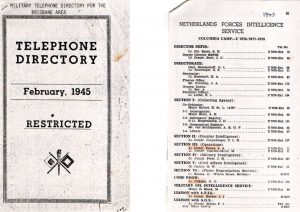
There were ongoing small diplomatic raptures in the relationship between the Dutch and Australian authorities, the major issue was the frustration by the Australians that not all people transported by the Dutch from liberated Dutch New Guinea had the required paperwork in place. The Australians were paranoid about their White Australian Policy and didn’t want any coloured people coming in, unless their cases were thoroughly investigated, the bureaucracy around that could take weeks or months and the Dutch took the attitude to bypass the bureaucracy and ask for forgiveness later, this attitude was regarded by the Australians as arrogant. An interesting case involved a Dutch dance group that toured the Allied Forces in the South West Pacific in 1945.
Yeronga Park – Women’s KNIL Corps
Dutch and NEI members of the Women’s KNIL Corps joined the WACs at Camp Yeronga Park in September 1944. The Women’s KNIL Corps was established in Melbourne on 5 March 1944. It provided drivers, typists, and nurses or military administrative positions to relieve Dutch or Indonesian males for combat duty. Initially the unit mustered 26 women led by a male officer. The women also volunteered to sew uniforms and arranged and assisted in Red Cross fundraising.
See: Dutch Women Army Corps at Yeronga Park Brisbane (WWII)
Housing
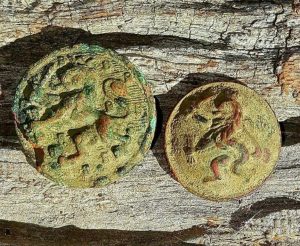
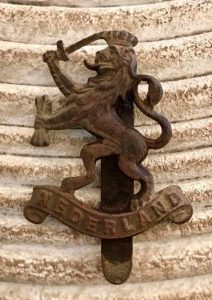
A large number of buildings were built scattered between the headquarters and the hospital. They are both side of the Wacol Station Road. It was in these house, close to Sandy Creek, that a large number of the Dutch staff members were housed. This is also the area where the dog tag of Willy de Eeren was found (see below) as well as other Dutch artifacts, by people using detectors. There are several remnants of buildings in the area on the side of the Wacol Station Road that is now situated in the Pooh Corner Reserve. It is yet unknown what these remnants represent perhaps part of a kitchen, other parts of an ablution pit. The houses here were not connected to the main sewerage facility.
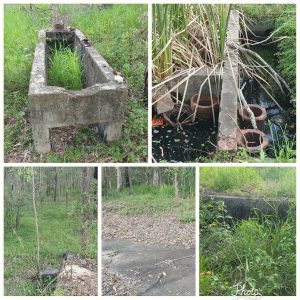
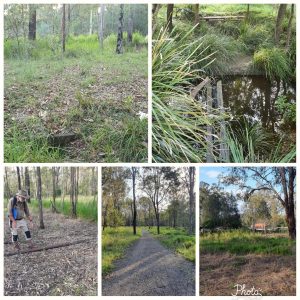
There is also a track (Picture right – top left) that would have been a previous road in this area. A bit further to the north are the ruins of the above mentioned sewerage plant (bottom right). From here the pipes would come down from the headquarter buildings on the top of the hill. Part of the current walking track through the Reserve follows these pipes and some of the pipes, wrapped in concrete is now exposed (2 pics bottom left). There are also the remnant of a bridge over Sandy Creek, used for the sewerage pipes (top right).
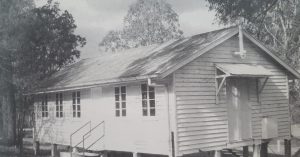
See: Dutch and Australian relicts from Camp Columbia
Dutch continued to use Camp Columbia after the war
The Dutch planned to stay in Camp Columbia until the liberation of sizeable towns in the NEI. People from these liberated towns could provide relief to their acute staff shortage across all NEI organisations. As no such large population centre were liberated, the NEI government-in-exile remained at Wacol until War’s end in September 1945, however the site remained in use by the NEI Government until March 1946[6]. Most officials and their offices moved to the NEI. Part use of Camp Columbia continued into 1947 when some barracks and houses were used for the recuperation of Dutch victims of the Japanese occupation of NEI who had been put into concentration camps. In groups they stayed for 3 to 6 month in Wacol (and elsewhere in Australia) again with the full support support of the Australian Government.
The facility was consequently greatly extended into an Australian refugee and migration camp . By 1949, it is estimated that one-tenth of the old Camp Columbia area became the Wacol East Displaced Persons Holding Camp. In the early 1950s the camp was developed to become the Wacol Migrant Centre, the biggest in Queensland. In 1952, the 1600 people capacity of the camp was exceeded, reaching close to 2000. The initial post-war refugee program was transformed into a larger program of re-settling migrants from Europe. A number of houses along Wilruna Street, close to Wacol Station were used for the refugees from NEI. This was close to the Gailes Golf Club, its clubhouse was used by the military officers.
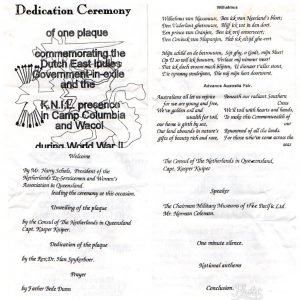
By the 1980s the converted timber Army huts were aging and a different model for receiving immigrants was evolving. The Wacol Migrant Centre was closed in 1987. The Prisons Department took over the site and the Arthur Gorrie Correctional Centre was opened in 1992.
Paul Budde – 2023
See also:
Personal recollections Camp Columbia – Jean van Schilfgaarde
Joan McConachy – secretary at the Dutch Army at Camp Columbia
Patricia Metcalfe and Wim van Wely met at Camp Columbia.
Archaeological research NEI Camp Columbia Wacol Brisbane
Launch Plans for Heritage Park by the Dutch Ambassador May 2022
- In return for Lend Lease aid, Allied nations were to provide goods or services to the United States for their assistance in the war under a program known as reverse or reciprocal lend lease. Similar arrangements were made between other allies such as in this case between Australia and the Netherlands.[]
- Rupert Lockwood – The Indonesian Exiles in Australia, 1942-47 []
- Originally the Australian Government had committed to base as many of 30,000 Dutch soldiers for training in bases in Western Australia which were already surveyed for this. The Dutch however wanted to increase these numbers to 100,000. However, when the first ship with 1,500 new recruits arrived in Brisbane, they received a hostile reception and the troops couldn’t get ashore. In the end the troops had to go untrained to Java and the plans for Dutch training camps in Australia evaporated.[]
- Wacol Military Museum []
